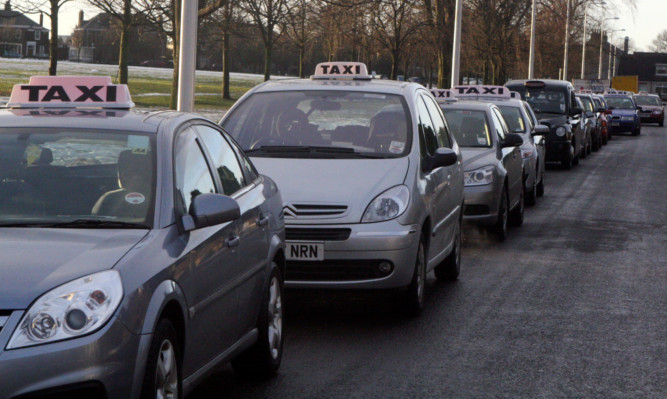Dundee City Council has introduced a cap on taxi numbers in the city the first time there has been a limit on cabs in almost a decade.
Following the publication of a survey which showed there was “no significant unmet demand” for taxis in Dundee, councillors at the latest licensing committee unanimously agreed to limit the number to 661.
There are 674 taxi licences in operation in the city with five temporary licences and that figure will be reduced through natural wastage, with no new licences being granted until the numbers fall below 611, councillors agreed.
Once that lower limit has been breached, the committee heard, a further survey will be held. In addition, legislation demands that an annual “top-up” survey must also be held to determine whether the figure is still appropriate for the city’s needs.
After the meeting, licensing convener Stewart Hunter praised the efforts of council officials in getting approval for the new policy.
“There has been a lot of hard work put in by officers and it’s also thanks to the taxi trade for being patient with us in getting what I believe is a better system for taxi drivers and most improtantly, for the public as well.”
The study, conducted by Halcrow this year on behalf of the city council and based upon a fleet level of 661 vehicles (at the time of the survey), found high passenger satisfaction.
Even if the numbers of taxis was reduced by 50, it would not affect any unmet demand, the survey showed.
The research showed that fewer than 10% of customers had given up waiting for taxis at a rank and there were no instances of passengers being present at ranks that were not being serviced by taxis at some point during observation periods.
The report says: “Should the authority introduce a numerical limit, we have identified that by reintroducing the limit at 661, there is no evidence of significant unmet demand.”
Around 85% of the public questioned stated they believed there are enough taxis in Dundee.
However, the study has identified that if the fleet was to reduce to 611 vehicles, there would be no effect to passengers in terms of delay.
“Therefore, should the limit be introduced, we would suggest that this be no lower than 611 vehicles,” it adds.
The committee must also decide to instruct a further full survey in three years.
Councillor Laurie Bidwell asked whether the policy would take into account the anticipated influx of visitors following the opening of the V&A, and was reassured that the annual “top-up” survey was precisely there for those situations.
After the meeting he said: “I was conscious that the recently launched Tourism Action Plan for Dundee is projecting half a million visitors to the city in the first year after the V&A opens and 300,000 thereafter.
“We don’t want visitors to the city arriving and finding they have to queue for a lengthy period for a taxi.
“I am reassured by the confirmation from council staff that the annual updating of the survey will be able to accommodate future actual and anticipated increases in demand for taxis.”
